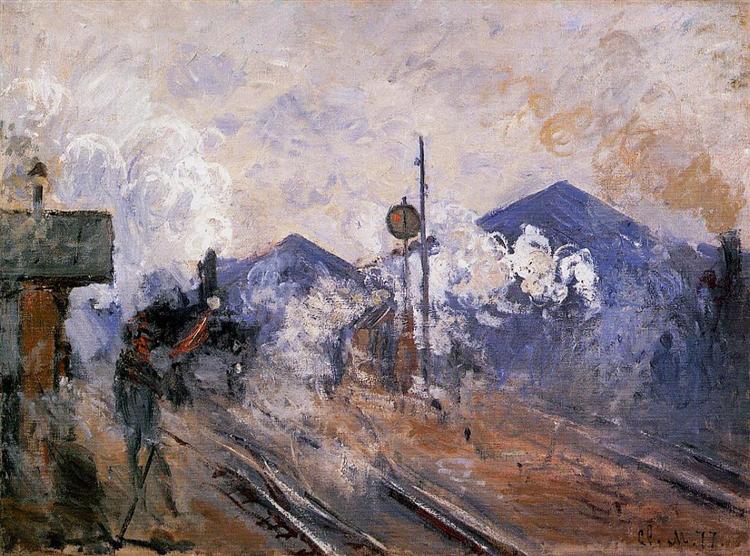Description
The work "Saint -Lazare Station - Vía on Exit" (1877) by Claude Monet significantly represents the painter's approach towards modernity and the change in the urban life of his time. Monet, a pioneer of the impressionist movement, uses in this painting its characteristic style to capture the ephemeral essence of light and atmosphere. The Saint-Lazare Train Station, one of the Neuralgic Transportation Centers in Paris, becomes the perfect setting for Monet to explore the interactions between shape and color, as well as the relationship between man and technology.
The composition of the work is rich in details and depth, where the train tracks dynamically emerge from the bottom of the canvas, taking the viewer to the bottom. Monet uses a perspective that suggests an expansion of space, with the rails that curve and move away in the distance. This deliberate use of guide lines not only brings movement to the scene, but also hints a sense of escape and dynamism, characteristics that were emerging in the modern life of the nineteenth century.
The tones of the paint are particularly captivating. Monet moves away from a darker and dark palette to adopt vibrant colors that capture the natural light that floods the station. The blue and gray of the atmosphere, accentuated by golden and silver reflections of the vapor of the locomotive, create a fascinating contrast that gives life to the work. The use of loose brushstrokes and rapid application techniques is distinctive to impressionism, focusing on the perception of the moment rather than in a detailed and precise representation.
Although there is no clear approach in individual human figures, the presence of the crowd is palpable through the representation of figures that seem to move towards the trains or lose themselves in the steam mist. This group suggests the frantic activity of the station, a space in which everyday life and the machine converge, reflecting the bustle of urban life. The steam nebula also acts as a mediator between the figures and the environment, intensifying the general atmosphere of surrealism that is often found in Monet's works.
"Saint -Lazare Station - Vía on exit" is part of a series of works that Monet performed on the train station, and contributes to its continuous exploration of light and color in industrial contexts. This interest in the urban environment as an artistic subject opens a dialogue not only about how modernity is perceived, but also about the emotional transformation that it causes. In this sense, Monet not only documents a place, but also captures the essence of the era of industrialization and progress.
The work is a testimony of Monet's talent to transform everyday scenes into deep sensory explorations. Their attention to light, the atmosphere and the mechanical means of transport are intertwined to form a panorama that speaks of both beauty and the chaos of modern life. Thus, "Saint -Lazare Station - via departure" is erected not only as a work of art, but as a historical document, a look at the cultural transformation of the late nineteenth century through the eyes of one of the greatest masters of impressionism. Monet's ability to capture the transience of a moment, his ability to capture the light and his brave exploration of modernity continue to help define his legacy in the history of art.
KUADROS ©, a famous paint on your wall.
Hand-made oil painting reproductions, with the quality of professional artists and the distinctive seal of KUADROS ©.
Reproduction service paintings With a guarantee of satisfaction. If you are not completely satisfied with the replica of your painting, we refund your money 100%.

